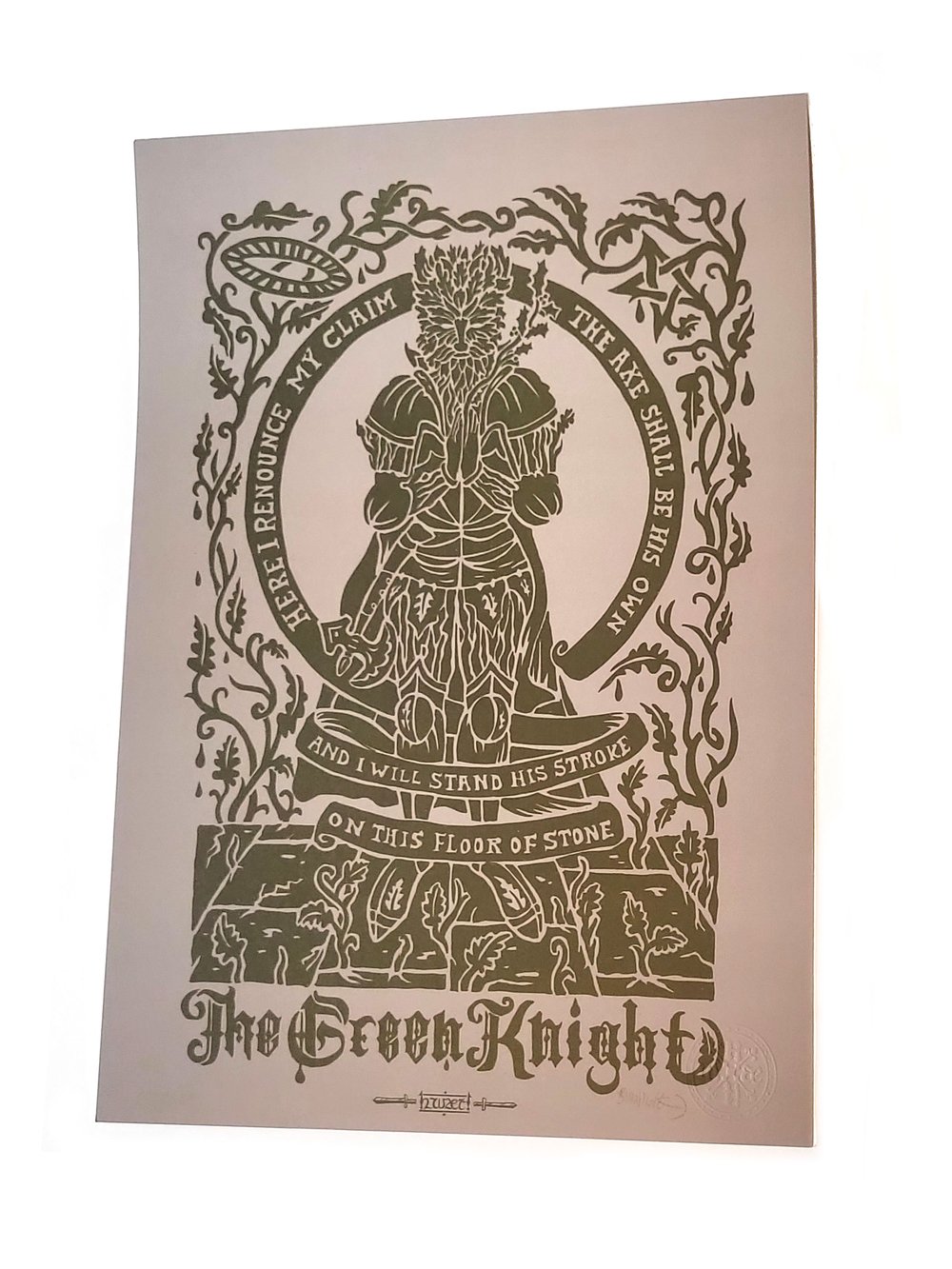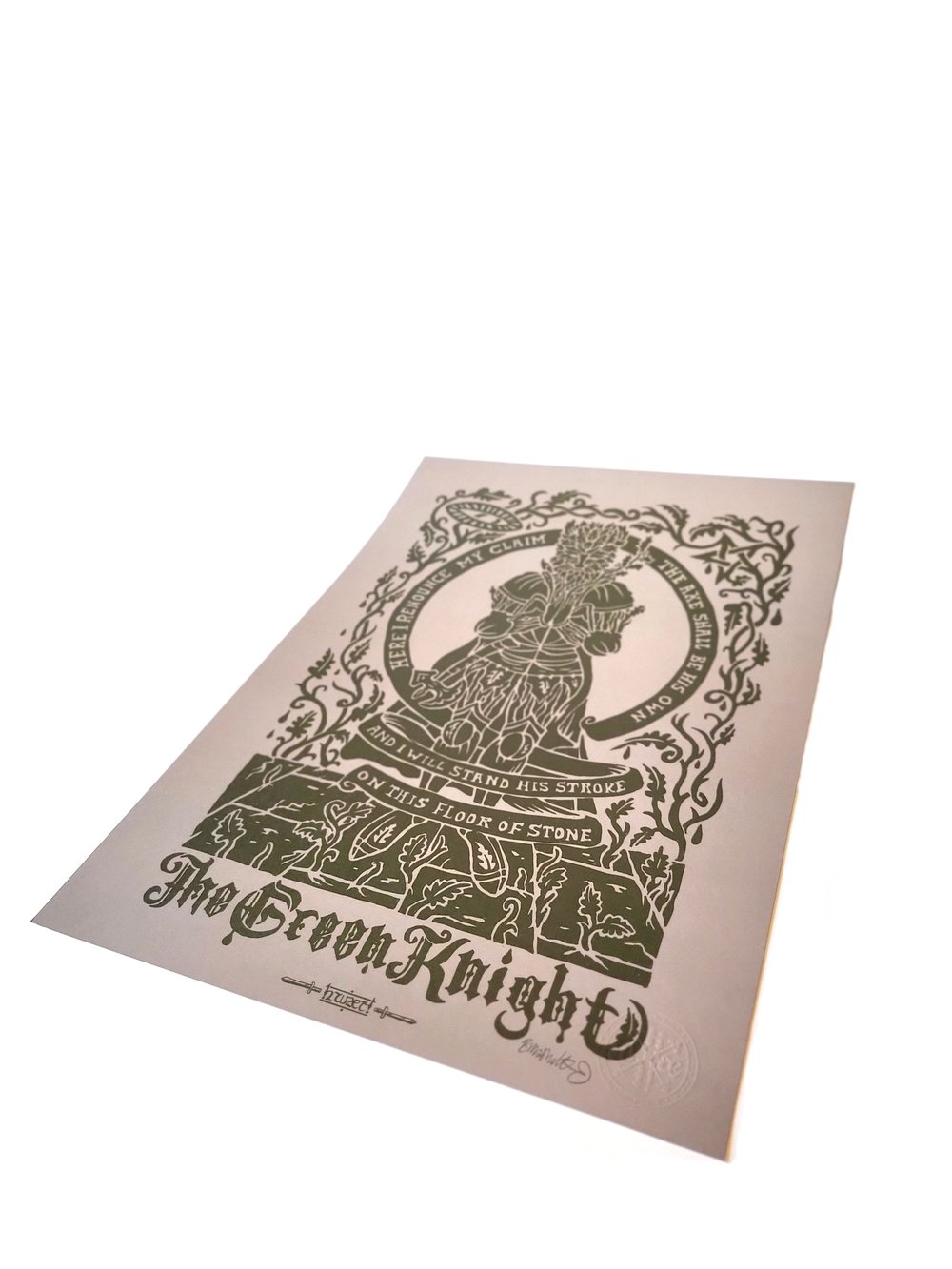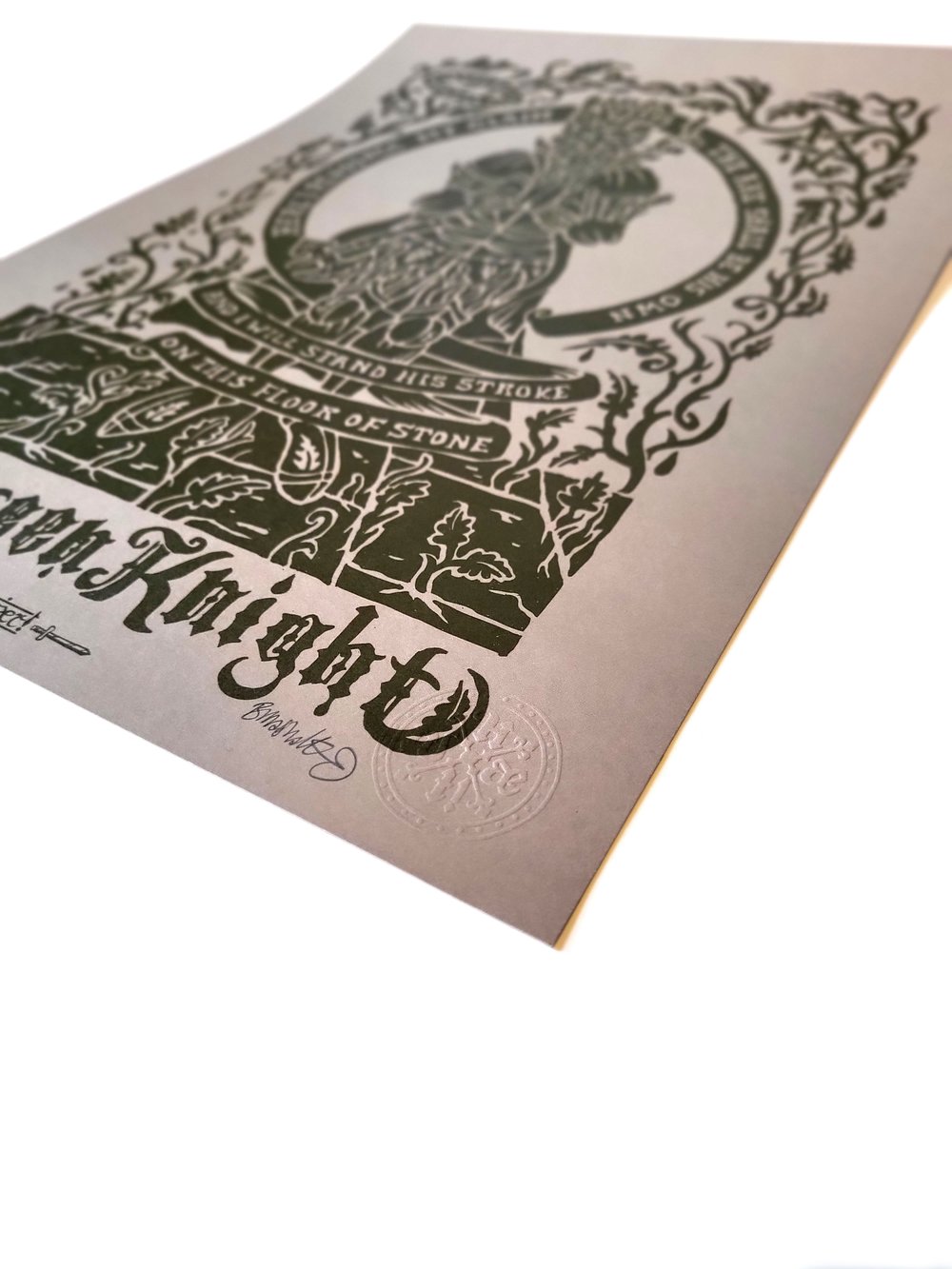The Green Knight A3 Art Print





Our latest print, inspired by the monumental brass memorials of medieval Europe, is dedicated to one of the most enigmatic figures of Arthurian legend – the Green Knight. Against the civility of King Arthur's court, the Green Knight represents the beautiful chaos of the old world, leaving the brave and noble knights of the Round Table stunned and confused by his mysterious blow-for-blow challenge. He leaves having made a terrifying bargain with young Sir Gawain, riding forth with his own severed head in his hand. Bunty's interpretation is inspired not only by modern translations of the poem itself, but by David Lowery’s 2021 film adaptation as well as historical depictions of the Green Man.
The story of Sir Gawain and the Green Knight:
It’s Christmas at Camelot and the Knights of the Round Table are celebrating with feasting and drinking, when suddenly the doors burst open and an imposing figure atop a huge horse comes charging into the room. His skin and raiment are the colour of deep green, and even his horse seems somehow bathed in the eerie light of a distant forest. His challenge to the knights is simple: if one of them should be so brave as to step forward and lay a blow on the Green Knight, then they must travel to his home in a year’s time and receive the same blow in return. Only young Sir Gawain is willing to accept, striding forward and decapitating the Green Knight in a single swing. When the collapsed body of the Green Knight then stands, retrieves its own head, and rides off as if nothing had happened, Sir Gawain’s fate is surely secured…
The story originates as a poem in a 14th century manuscript, written in Middle English by an unknown scribe. It is among the most famous of all the chivalric romances, and is considered one of the most important texts in the history of the English language.
Illustration by Bunty May Marshall. Green Knight quote from Sir Gawain and the Green Knight, translated by Jessie L. Weston and published in 1898.
Printed on 300gsm heavyweight recycled card stock. Each print comes signed and embossed.
